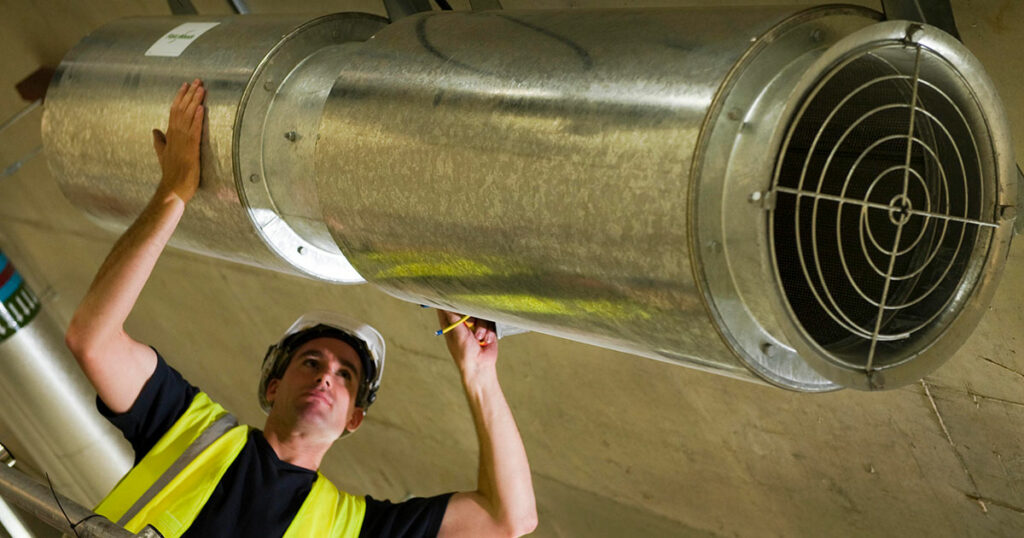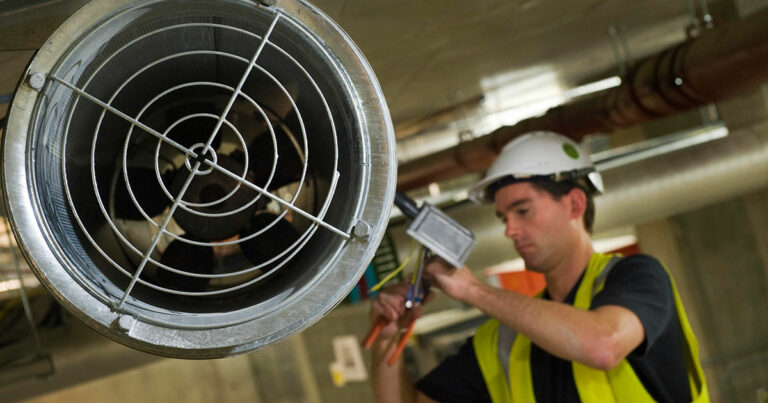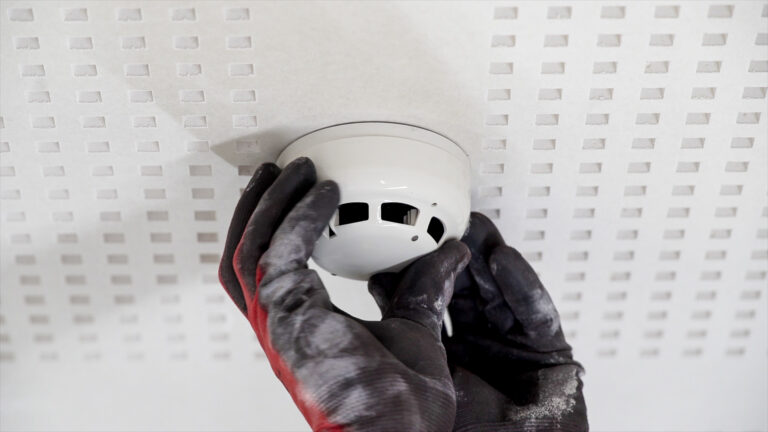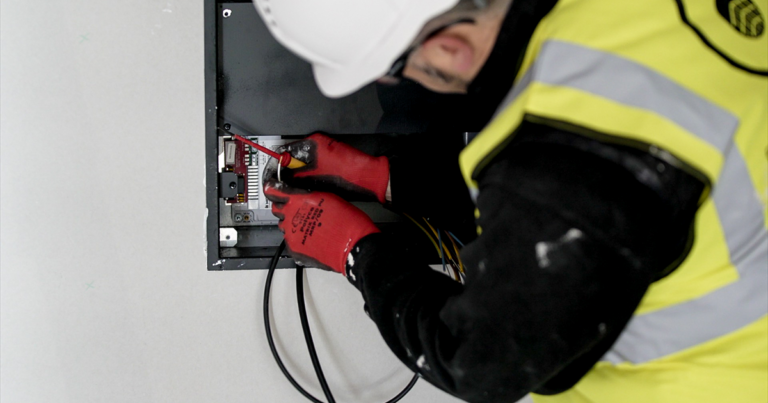Enclosed and underground car parks present unique ventilation challenges. On a daily basis, they require ventilation to remove vehicle exhaust fumes (particularly carbon monoxide, CO, and nitrogen oxides). In a fire scenario, they need robust smoke control to extract smoke and heat, protecting anyone evacuating and aiding firefighting.
To meet these needs, car park ventilation systems often have many components – CO sensors, exhaust fans, jet fans, automated vents or dampers, and a control system that ties into fire alarms. Maintaining all these parts is critical for both day-to-day safety and emergency readiness. This article outlines why building owners and facilities managers need Car Park Ventilation Maintenance, to ensure both air quality compliance and effective smoke extraction when it counts.
Key Components of a Car Park Ventilation System
Before diving into maintenance schedules, it’s worth noting the typical components you might find in a car park ventilation setup:
- CO sensors – Electronic detectors placed around the car park to monitor carbon monoxide levels (and sometimes nitrogen dioxide). These sensors automatically trigger fans to maintain safe air quality during normal operations.
- Jet fans (impulse fans) – Small fans mounted to the ceiling that push air (and smoke) horizontally towards extraction points. They help circulate air in large or long car park areas by creating airflow momentum.
- Smoke extract fans – High-capacity fans (usually roof-mounted or wall-mounted) that pull smoke (or exhaust air) out of the car park and expel it outside. In fire mode, these often run at high speed to achieve rapid smoke clearance. They are typically rated to withstand high temperatures (e.g. 300°C for 1-2 hours) as per standards.
- Ducts, dampers, or vents – Many systems have ductwork to channel air, with motorized dampers that open in a fire to allow fresh air in or smoke out from specific areas. Some car parks use natural openings (like grilles or shafts) instead of mechanical dampers for makeup air.
- Control panel and BMS integration – A dedicated panel that receives signals from CO sensors and fire alarms, controlling fans accordingly. It often integrates with the Building Management System and has manual override capabilities for firefighters.
Each of these components requires attention during maintenance. Let’s go through them one by one, with recommended service actions and intervals.
CO Sensors – Calibration and Testing
What to do: CO sensors are the “noses” of your ventilation system, continuously sniffing for car exhaust fumes. Over time, like any sensor, they can drift and lose accuracy. It’s crucial to calibrate CO detectors at least once a year to ensure they read correctly. Calibration typically involves using a test gas to verify the sensor’s readings and adjusting if necessary. Additionally, these sensors often have an expected lifespan (e.g. 5-7 years), so plan for replacements as they age.
When: Monthly: Perform a functionality check – many systems allow you to trigger a sensor alarm condition (either via software or a test kit) to see if the fans start as they should. Every 12 months: Have a qualified technician calibrate each CO sensor and check its electrical connections. Also test the alarm thresholds (e.g. simulate high CO and ensure the system goes into high ventilation mode and triggers any alarms or warnings if designed to do so). Annually: is a common requirement, but if your car park has a harsh environment (lots of traffic, pollution, or temperature extremes), you might do this more frequently (e.g. every 6 months) as a precaution.
Jet Fans – Inspection and Cleaning
What to do: Jet fans are typically very robust but operate in a tough environment (exhaust soot, dust, vibration). Maintenance for jet fans includes: checking that all mounting bolts and brackets are secure (fans can vibrate loose over time – initial re-tightening after installation and periodic checks are recommended); cleaning the fan blades or impellers if there’s a significant buildup of dust (dirty blades can reduce airflow and cause imbalance); ensuring the fan spins freely (no obstructions or bent guard that could scrape); and verifying the fan runs when commanded. Many jet fans are “sealed for life” in terms of bearings, so they don’t require lubrication, but confirming that is part of maintenance.
When: Monthly: Do a visual inspection of each visible fan – are the fans clean and intact? Listen for any unusual noise when they run (a whining or grinding could indicate a bearing issue or debris). Quarterly: Include jet fans in a test where you simulate a fire or high-CO event and ensure each fan actually starts and the airflow is felt. This might be done zone by zone if there are many fans. Every 6-12 months: Schedule a more thorough maintenance – checking fixings, cleaning fans, and performing any manufacturer-recommended checks (like amperage draw to see if the motor is running within spec).
Smoke Extract Fans – Testing and Servicing
What to do: The big extract fans are critical in a fire, and they often double as everyday exhaust fans too. Key maintenance tasks include: testing the startup function (especially from a dead stop, and on secondary power if there’s an emergency generator or backup supply – you want to ensure the fan will kick in under any condition); checking belts if the fan isn’t direct-drive (worn belts should be replaced); listening for bearing noise; verifying the actuators for any automatic dampers at the fan intake/outlet; and cleaning or inspecting the fan blades and housings for soot or debris. Temperature-rated fans should be periodically verified that their thermal protection (if any sensors) is functional, though you won’t be actually running them at 300°C! Instead, ensure that any maintenance tests don’t exceed normal operating temperature and that the fan’s casings and intakes are clear.
Crucially, test the firefighter’s override at the panel for the extract fan – when activated, the fan should run at fire emergency speed and disregard any normal interlocks (some systems have a special mode for firefighting).
When: Weekly: If your system has a status panel, glance at it for any fault lights or abnormal conditions for the main fans. Some sites do a quick weekly “bump” test of large fans (short power on) but that might not be feasible everywhere. Monthly: Simulate a mains power failure to ensure the extract fan switches to backup power (generator or UPS) properly. If a generator is involved, that likely has its own weekly or monthly test regime, which indirectly tests the fan’s backup supply. Quarterly: Conduct a functional test where you trigger the smoke extract system via a fire alarm input – observe that dampers open, the extract fan runs up to speed, and the airflow path is established. Measure airflow or pressure if possible to ensure performance hasn’t degraded. Annually: Have a full service by professionals – this may include airflow volume measurements, damper drop tests, verification that the fan still meets design duty (some firms do a smoke test or hot smoke test for performance, but typically it’s just functional testing). Also, clean the exhaust ducts/shafts annually if applicable. Car park environments can accumulate a lot of soot and dust in the ducts; an annual cleaning (with certificate) not only helps maintain airflow but is increasingly expected for compliance.
Dampers, Vents, and Other Components
What to do: If your car park has motorized dampers (for example, at the inlet openings or on smoke outlet grilles), they need regular exercise and inspection. Ensure each damper opens fully and closes fully on command – a half-open damper in a fire could choke off the ventilation. Lubricate moving parts if recommended. Check any fire curtain or physical barriers if your design includes them, making sure they deploy/retract correctly. Fire detection devices in the car park (heat detectors, linear heat cables, etc.) should be tested as part of the overall fire system maintenance – their proper function is critical to triggering smoke ventilation in a timely manner.
Also, inspect any weather louvres or rain covers on vents; broken louvers might let rain in or restrict airflow, so fix any damage you find. Because car parks are open to vehicle traffic, also confirm that protective guards are in place around sensors or low-placed equipment to prevent physical damage.
When: Quarterly: It’s good practice that every 3 months, each zone and component of the smoke control system is independently tested. That means in the first quarter you might trigger Zone 1 fire, next quarter Zone 2, etc., cycling through so that across the year every damper, vent, and sensor had a direct test. Annually: during the big service, test every damper’s full range and measure closing and opening times against spec if possible. Replace any faulty actuators immediately. Check the condition of seals on smoke curtains or vents. The annual check is essentially a comprehensive commissioning test, re-verifying everything against original performance specs.
Harsh Environment Considerations
Car parks can be considered a “harsh environment” for equipment – there are exhaust gases (which can be corrosive), frequent temperature changes, vibration, and sometimes water (if sprinklers go off or from vehicles bringing in rainwater). Because of this, maintenance frequency might need to be stepped up compared to a cleaner environment. Industry guidance notes that high-risk or harsh environments (like underground car parks) may require more frequent servicing than the standard intervals. For instance, while 6-monthly professional maintenance might suffice for a residential stairwell AOV, a busy enclosed car park might benefit from quarterly professional check-ups and robust monthly in-house checks.
Keep an eye out for corrosion on metal parts, and any plastic components turning brittle or discoloring (a sign of chemical damage). If your car park ventilation runs frequently due to traffic, the wear and tear will be higher – consider shorter cycles for component replacement (e.g. fan belts might need changing annually instead of every 3 years, sensors recalibrated biannually instead of annually, etc.).
Summary of “What and When” for Car Park Ventilation Maintenance
To encapsulate the maintenance plan:
- Daily/Weekly: Monitor control panel for fault indicators; listen for any unusual noises during normal fan operation; visually ensure vents/dampers are in their correct standby position and unobstructed.
- Monthly: Functionally test CO sensors (cause a fan start via sensor input); simulate power failure to test backup systems; inspect fans and accessible components for dirt or damage; clean sensor covers and vent grilles as needed.
- Quarterly: Have a competent person test each part of the system (rotating through zones): trigger fire alarms to test fan startup and damper operation, test firefighter overrides, check all detection and interface inputs. Address any issues noted.
- Biannual (6-monthly): Engage a competent maintainer (smoke ventilation specialist) to do a detailed service: review the logbook for past faults, verify cause-and-effect programming is correct, test primary vs secondary power switchover, measure battery health, and operate every moving component. They should also check fan runtime hours (to anticipate bearing wear) and ensure everything has been exercised per schedule.
- Annual: Have a certified smoke control firm perform a full maintenance and inspection. This will include full-scale tests of fans (perhaps at full load), calibration of sensors, cleaning of extraction ducts, and issuance of a maintenance certificate verifying the system’s performance. Annual calibration of CO sensors is done now if not done earlier. Any non-compliances or degraded components can be flagged for replacement.
Document each of these activities in the maintenance records. Car park ventilation systems often come under scrutiny by both fire safety inspectors and environmental health officers (for air quality compliance), so solid records help on both fronts.
By following a comprehensive “what and when” maintenance plan, you ensure that on an average day your car park isn’t accumulating toxic CO, and on a worst day (a car fire) the smoke will be cleared effectively. Both outcomes protect lives and property – and keep you on the right side of regulations from the Fire Safety Order to local building codes that require functional smoke control in car parks.
Managing a car park ventilation system’s upkeep can be complex – but FDS Maintenance makes it simple. Our skilled engineers can service everything from CO sensors to high-temperature extract fans, on a schedule tailored to your car park’s usage. We’ll help you stay compliant with safety and air quality standards, and keep your system running reliably.
Get in touch with FDS Maintenance for a custom car park ventilation maintenance plan, and ensure the only thing your car park fans are blowing is peace of mind.





